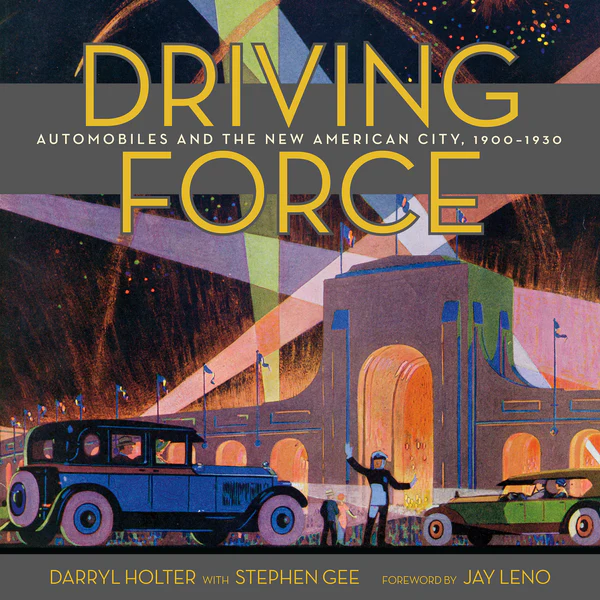
Driving Force: Automobiles and the New American City 1900-1930 (Angel City Press) explores how Los
Angeles’s enigmatic car culture propelled the explosive growth of America’s passion for cars. And with thoroughly researched text and page-after-page of vintage images, it shows how roadblocks that limited the sales of automobiles in the rest of the country, were eliminated in a new-thinking city in the earliest days of the car industry.
At the dawn of the twentieth century, as Los Angeles transformed from a rugged outpost to a booming metropolis, so too did the fledgling automobile simultaneously come of age. Ignited by an unlikely and visionary mix of entrepreneurs who ventured into unknown territory, early adopters broadened the market and convinced the public that cars were no longer a luxury—they were the ultimate modern necessity. From these early enthusiasts, men and women in various business recognized that the automobile would change society and wanted a piece of that action. The city’s auto business emerged initially among bicycle shop owners, carriage retailers, and automobile aficionados who started selling—and repairing!—cars. Their workshops thrived, expanded, and eventually became dealerships, the key component to the auto boom.
In this first major history of dealers at work—and one of the first books to chronicle the early history of cars in Los Angeles—authors Darryl Holter and Stephen Gee share the untold story of pioneering automobile dealers who seized the chance to join a start-up industry that reinvented an American city. Some became wealthy and powerful, others failed. But the lure of the automobile never wavered.
The L.A. dealers helped change the way cars were sold. They championed selling cars on credit while accepting“used cars” that buyers “traded in” so they could buy a new one. They introduced the West Coast to the concept of dealerships with service bays for on-site car repairs; persuaded manufacturers to design cars to their specifications and created custom vehicles and innovations that were copied around the country.
With more than 150 spectacular vintage images—many never before published—Driving Force brings to life the people who made the automobile an icon of the modern American city. In its pages, readers will discover how the story of the automobile is interwoven with Southern California’s unique topography and sun-drenched climate; a new era of women’s rights, and a growing female influence on automobile design; the creation of the Los Angeles Auto Show and the remarkable 1929 fire that threatened to destroy it; and how car dealers launched renowned L.A. radio and television stations, including KNX, KFI, and KCBS-KCAL.
As car collector extraordinaire Jay Leno explains in his Foreword to Driving Force, “Darryl Holter shows that auto retailers connected manufacturers to buyers, changing America and shaping the history, economy, and culture of Los Angeles.”
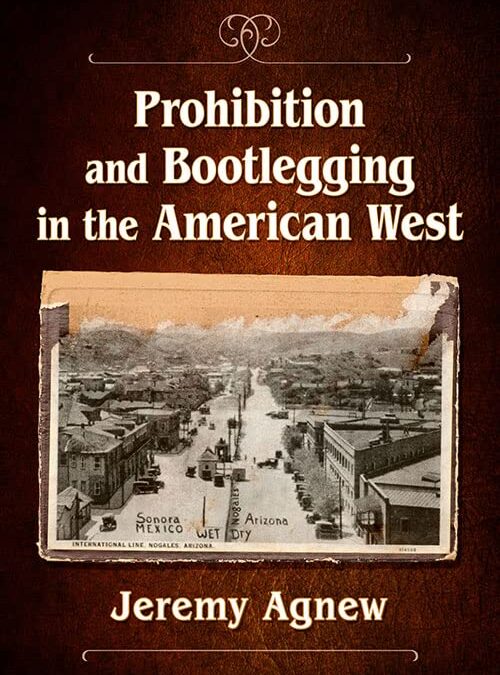
Prohibition was imposed by eager temperance movements organizers who sought to shape public behavior through alcoholic beverage control in the 19th and early 20th centuries. The success of reformers’ efforts resulted in National Prohibition in America from 1920 to 1933, but it also resulted in a thriving illegal business in the manufacture and distribution of illegal liquor. The history of Prohibition and the resulting illegal drinking is frequently told through the lens of crime and violence in Chicago and other major East Coast cities. Often neglected are the effects of Prohibition on the Western part of the United States and how Westerners rose to the challenge of avoiding the consequences of illegal drinking. Illegal liquor was imported from abroad, made in stills using strange ingredients that were sometimes poisonous to the unlucky drinker. This history includes stories ranging from serious to quirky, and provides an entertaining account of how misguided efforts resulted in numerous unintended consequences.

A monumentally researched biography of one of the nineteenth century’s wealthiest self-made Americans…Well-written and worthwhile” (The Wall Street Journal) it’s the rags-to-riches frontier tale of an Irish immigrant who outwits, outworks, and outmaneuvers thousands of rivals to take control of Nevada’s Comstock Lode.
Born in 1831, John W. Mackay was a penniless Irish immigrant who came of age in New York City, went to California during the Gold Rush, and mined without much luck for eight years. When he heard of riches found on the other side of the Sierra Nevada Mountains in 1859, Mackay abandoned his claim and walked a hundred miles to the Comstock Lode in Nevada.
Over the course of the next dozen years, Mackay worked his way up from nothing, thwarting the pernicious “Bank Ring” monopoly to seize control of the most concentrated cache of precious metals ever found on earth, the legendary “Big Bonanza,” a stupendously rich body of gold and silver ore discovered 1,500 feet beneath the streets of Virginia City, the ultimate Old West boomtown. But for the ore to be worth anything it had to be found, claimed, and successfully extracted, each step requiring enormous risk and the creation of an entirely new industry.
Now Gregory Crouch tells Mackay’s amazing story—how he extracted the ore from deep underground and used his vast mining fortune to crush the transatlantic telegraph monopoly of the notorious Jay Gould. “No one does a better job than Crouch when he explores the subject of mining, and no one does a better job than he when he describes the hardscrabble lives of miners” (San Francisco Chronicle). Featuring great period photographs and maps, The Bonanza King is a dazzling tour de force, a riveting history of Virginia City, Nevada, the Comstock Lode, and America itself.

West Coast Wild
California s architectural anomalies
At the dawn of the automobile age, Americans predilection for wanderlust prompted a new wave of inventive entrepreneurs to cater to this new mode of transportation. Starting in the 1920s, attention-grabbing buildings began to appear that would draw in passing drivers for snacks, provisions, souvenirs, or a quick meal. The architectural establishment of the day dismissed these roadside buildings as monstrosities .
Yet, they flourished, especially along America s Sunbelt, and in particular, in Southern California, as proprietors indulged their creative impulses in the form of giant, eccentric constructions from owls, dolls, pigs, and ships, to coffee pots and fruit. Their symbolic intent was guileless, yet they were marginalized by history. But, over the past 40 years, California’s architectural anomalies have regained their integrity, and are now being celebrated in this freshly revised compendium of buildings, California Crazy.
Brimming with the best examples of this architectural genre, California Crazy includes essays exploring the influences that fostered the nascent architectural movement, as well as identifying the unconventional landscapes and attitudes found on Los Angeles and Hollywood roadsides which allowed these buildings to flourish in profusion.
In addition, California Crazy features David Gebhard’s definitive essay, which defined this vernacular movement almost forty years ago. The California Crazy concept is expanded to include domestic architecture, eccentric signage, and the automobile as a fanciful object.
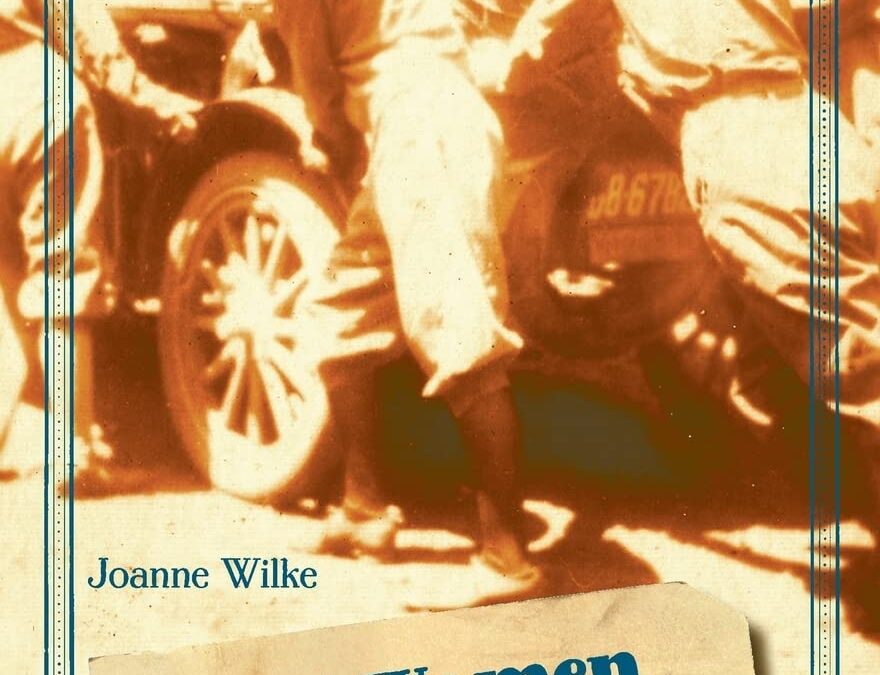
In 1924 eight young women drove across the American West in two Model T Fords. In nine weeks they traveled more than nine thousand unpaved miles on an extended car-camping trip through six national parks, “without a man or a gun along.” It was the era of the flapper, but this book tells the story of a group of farm girls who met while attending Iowa’s Teacher’s College and who shared a “yen to see some things.”
A blend of oral and written history, adventure, memoir, and just plain heartfelt living, Eight Women is a story of ordinary people doing extraordinary things. Weaving together a granddaughter’s essays with family stories and anecdotes from the 1924 trip, the book portrays four generations of women extending from nineteenth-century Norway to present-day Iowa—and sets them loose across the western United States where the perils and practicalities of automotive travel reaffirm family connections while also celebrating individual freedom.

Over the years, American automobile racing has enjoyed a handful of successful racing families such as the Andrettis and Unsers in Indy car racing and the Pettys, Allisons and Earnhardts in NASCAR. We’ve also seen this phenomenon in Europe and international racing, with the likes of Graham Hill and his son Damon, world champions both, and the legendary Ferrari Formula One hero Gilles Villeneuve and his son Jacques, who was successful in both Indy and F1 cars.
Less well-known with the passage of time, but equally accomplished in a wide-range of American open wheel racing are the Bettenhausens, Tony and his three sons, Gary, Merle and Tony, Jr. The family’s story has been told before by Carl Hungness in his epic GO! The Bettenhausen Story, published in 1982. But more than thirty years later, with advice and assistance from Merle and Susan Bettenhausen we decided to take a fresh, pictorial look at the family’s story using Racemaker Press’s superb photo archive along with the Bettenhausen family’s personal collections.
Award-winning author Gordon Kirby has created a visual odyssey of the Bettenhausen family’s epic story, starting with two-time Indy car champion Tony Senior’s first laps at the wheel of a mid-western midget in 1938, and following Gary’s, Merle’s and Tony Jr.’s careers. This book features over 350 superb photos and is enlivened by Merle and Susan Bettenhausen’s personal recollections, observations and commentary about their father, brothers and family. The book is completed with full statistical data of the Bettenhausens’ championship racing careers

Automobile Quarterly’s newest addition, SSR: An American Original, written by automotive journalist Gary Witzenburg, documents the driving forces behind this incredible vehicle in a handsome, hard-bound book. Enthusiasts are exposed to the ”behind the scenes” decisions and wrenching that created the SSR-from the process of incorporating late-1940s Chevrolet pickup design cues to the engineering and logistical challenges experienced on the SSR’s fast-track to production. The SSR is the enthusiasts’ dream; the book is its authoritative documentation.
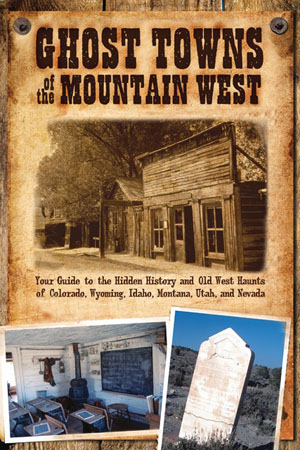
The Rocky Mountain and Great Basin states are the heart of ghost-town country. Once-bustling pioneer outposts, mining camps, lumber towns, and railroad villages stand today as reminders of the glory days of gold rushes, industrial progress, and that pioneering spirit of the Old West. This book guides readers to the fascinating and scenic ghost towns of Colorado, Wyoming, Idaho, Montana, Utah, and Nevada. Varney highlights popular tourist destinations as well as out-of-the-way spots unfamiliar even to natives of the region. Maps, historical background, and stunning color photographs bring to life dozens of ghost towns and provide practical information for exploring this fascinating chapter of American history.
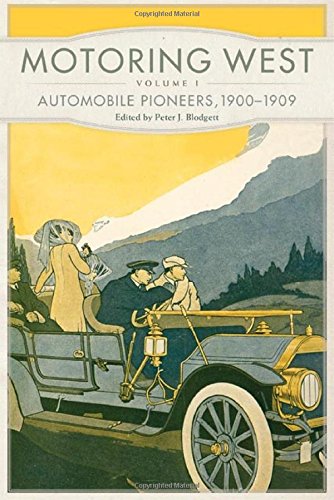
In the first years of the twentieth century, motoring across the vast expanses west of the Mississippi was at the very least an adventure and at most an audacious stunt. As more motorists ventured forth, such travel became a curiosity and, within a few decades, commonplace. For aspiring western travelers, automobiles formed an integral part of their search for new experiences and destinations—and like explorers and thrill seekers from earlier ages, these adventurers kept records of their experiences. The scores of articles, pamphlets, and books they published, collected for the first time in Motoring West, create a vibrant picture of the American West in the age of automotive ascendancy, as viewed from behind the wheel.
Documenting the very beginning of Americans’ love affair with the automobile, the pieces in this volume—the first of a planned multivolume series—offer a panorama of motoring travelers’ visions of the burgeoning West in the first decade of the twentieth century. Historian Peter J. Blodgett’s sources range from forgotten archives to company brochures to magazines such as Harper’s Monthly, Sunset, and Outing. Under headlines touting adventures in “touring,” “land cruising,” and “camping out with an automobile,” voices from motoring’s early days instruct, inform, and entertain. They chart routes through “wild landscapes,” explain the finer points of driving coast to coast in a Franklin, and occasionally prescribe “touring outfits.” Blodgett’s engaging introductions to the volume and each piece couch the writers’ commentaries within their time.
As reports of the region’s challenges and pleasures stirred interest and spurred travel, the burgeoning flow of traffic would eventually and forever alter the western landscape and the westering motorist’s experience. The dispatches in Motoring West illustrate not only how the automobile opened the American West before 1909 to more and more travelers, but also how the West began to change with their arrival.
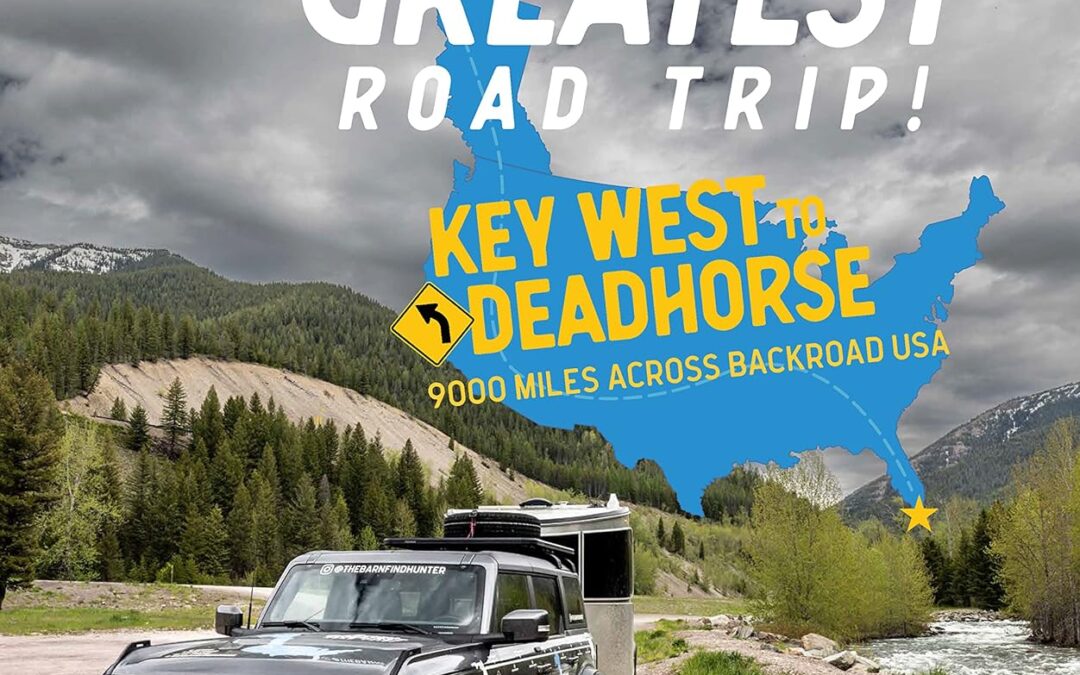
Ride along with author Tom Cotter and photographer Michael Alan Ross as they pilot their Ford Bronco/Airstream Basecamp combination 8,881 miles along the lower 48’s back roads and byways.
Tom Cotter has spent decades ferreting out lost “barn find” collector cars. The process has made him an ardent road tripper, logging thousands of miles every year on America’s back roads. Previous journeys have traced Route 66 in his 1939 Ford Woody wagon and followed the Lincoln highway coast to coast behind the wheel of a 1926 Model T.
Cotter’s journeys led him to wonder: What could be the most epic American road trip? The answer: Key West, Florida, to Deadhorse, Alaska, its thousands of miles recounted in America’s Greatest Road Trip. Cotter and Ross drove across the country, through British Columbia and the Yukon, and finally through Alaska to the literal end of the road. Ross documented their road time in thousands of photographs.
Along the way, the pair met fellow road trippers, adventurers, small-town Americans, world travelers, and rolled through an ever-changing geography from the Gulf of Mexico to the Mississippi Delta to the Great Plains and Mountain states through the Northwest Passage and finally several hundred miles of Alaska’s challenging ALCAN Highway.
Cotter’s observations of Two-Lane America are complemented by Ross’s beautiful photography capturing both the sweep and the detail of life off the beaten path.
Join them on their once-in-a-lifetime journey—you’ll be glad you came along for the ride.

The world will always remember Neil Armstrong and Buzz Aldrin for their first steps on the moon, yet few today hold in respect the sites that made these and other astronauts’ journeys possible. Across the American landscape and on the lunar surface, many facilities and landing sites linked to the Apollo program remain unprotected. Some have already crumbled to ruins–silent and abandoned. The Final Mission explores these key locations, reframes the footprints and items left on the moon as cultural resources, and calls for the urgent preservation of this space heritage.
Beginning with the initiation of the space race, the authors trace the history of research, training, and manufacturing centers that contributed to lunar exploration. From the early rocket test stands of Robert H. Goddard, to astronaut instruction at Meteor Crater, to human and primate experiments at Holloman Air Force Base, innumerable places proved critical to developing the equipment for exploring space, surviving the journey, and returning to Earth safely. Despite their significance to the history of human spaceflight, many landmarks face the threat of damage or destruction. Most alarming is that the rapid advancement of technology renders stations obsolete long before they are deemed worthy of preservation. Moreover, the lack of precedence for protecting off-planet artifacts poses a unique challenge for space archaeology. While NASA’s 2011 recommendations for spacefarers suggest avoiding close proximity to this cultural landscape, the authors advocate stronger routes of preservation and present models for safeguarding space history–both on Earth’s surface and beyond.
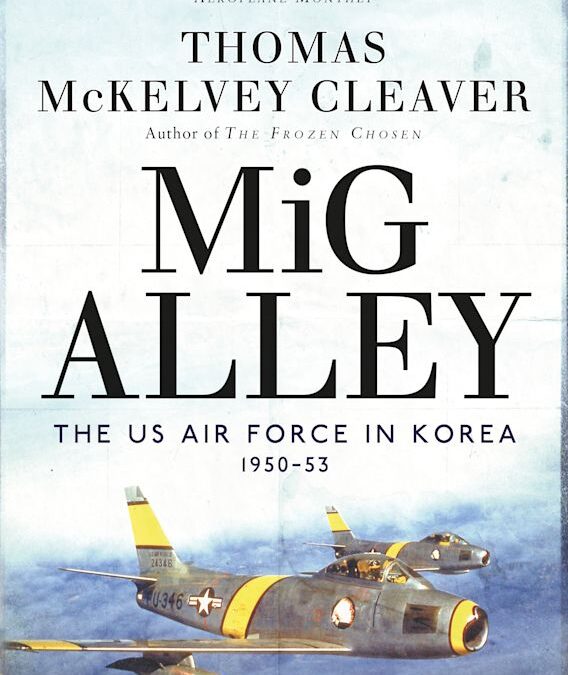
Titled after the wartime nickname for the part of North Korea that was the epicentre of a bitter struggle for air superiority over the Korean Peninsula, MiG Alley offers an in-depth analysis of the US Air Force’s war in Korea, packed with interesting and exciting personal stories based on first-person testimony from both American and Soviet sources.
Following the end of the Korean War, the prevailing myth in the West was that of the absolute supremacy of US Air Force pilots and aircraft over their Soviet-supplied opponents. The claims of the 10:1 victory-loss ratio achieved by the US Air Force fighter pilots flying the North American F-86 Sabre against their communist adversaries, among other such fabrications, went unchallenged until the end of the Cold War, when Soviet records of the conflict were finally opened.
Packed with first-hand accounts and covering the full range of US Air Force activities over Korea, MiG Alley brings the war vividly to life and the record is finally set straight on a number of popular fabrications. Thomas McKelvey Cleaver expertly threads together US and Russian sources to reveal the complete story of this bitter struggle in the Eastern skies.
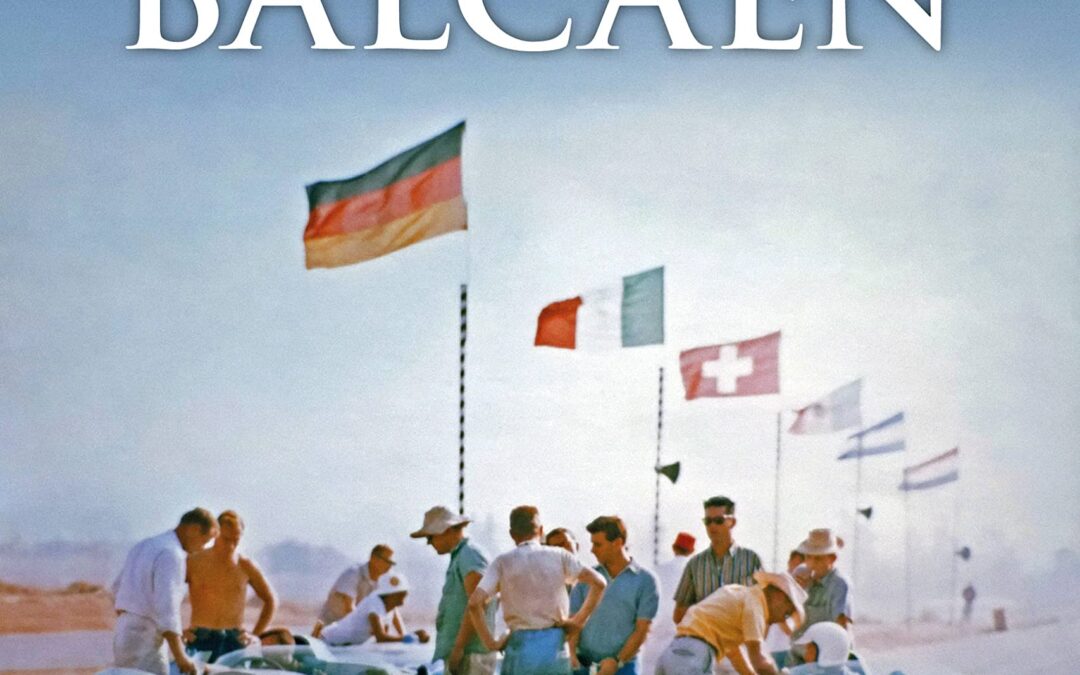
Raoul ‘Sonny’ Balcaen grew up in Los Angeles at a time when it became the epicentre of American motor racing, nurturing a vast talent pool of people whose influence has echoed through to today.
As a teenager, he successfully competed with his home-built Top Fuel dragster during the formative years of the sport. With Lance Reventlow, he worked on the famous Scarab sports cars and was standing in the dyno room when the team’s all-American Formula 1 engine was fired up for the first time. A period as Jim Hall’s crew chief and a close association with Carroll Shelby added to the know-how that guided him towards becoming a successful entrepreneur and led to all that followed.
- Aged 17, Balcaen built his own Top Fuel drag racer, the ‘Bantamweight Bomb’, which he developed relentlessly and drove to many successes.
- His role in the fabulous Scarab sports cars — the landmark all-American racers — and insights into life with their creator, the incomparable Lance Reventlow.
- Working as crew chief to the brilliant Jim Hall, preparing and running his Lotus Eleven and Lister-Chevrolet long before the famous Chaparrals emerged.
- A second spell with Scarab, this time with the Formula 1 project — the first American Grand Prix car — plus a special job for Reventlow converting a Scarab sports racer into a street car.
- Onwards into setting up his own successful business, IECO (Induction Engineering Co), to create and sell high-grade performance and appearance accessories, with Chevrolets — especially Corvair and Vega — featuring strongly.
- His many-faceted dealings with Carroll Shelby, leading to consultancy and even assignments as occasional Shelby American company pilot.
- Along the way we meet many other big names of the era, including Chuck Daigh, Bruce Kessler, Warren Olson, Dick Troutman, Tom Barnes, Phil Remington, Ken Miles, Leo Goossen, Jim Travers, Frank Coon, Ed Donovan and Pete Brock.
This engaging memoir is the very personal history of a momentous time and place in which we meet a who’s who of West Coast road-racing heroes.
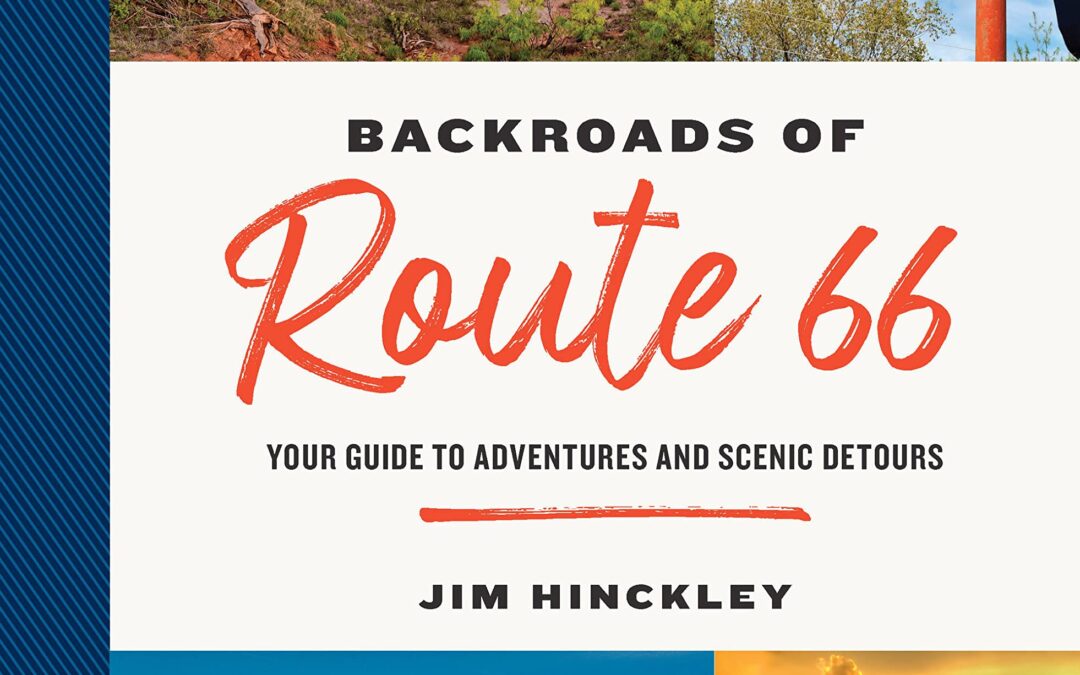
This wonderfully illustrated, up-to-date guide to the natural, cultural, and historical gems hidden just off the legendary Route 66 outlines 30 trips for curious travelers.
Route 66 is arguably the
world’s most famous highway (more than 60% of Route 66 adventurers are from overseas!)—its motels, diners, and roadside attractions comprising a time capsule of America’s love affair with the automobile. While many of the road’s
iconic attractions have disappeared with time (along with large stretches of the road itself), others are as enduring as ever.
In this completely revised and updated version of The Backroads of Route 66, author and Route 66 expert Jim Hinckley is your guide from the lowlands of the American Plains to the high plateaus of New Mexico and Arizona, from the Great Lakes to the mighty Pacific Ocean, and through major metropolises and remote country towns.
But rather than take the road oft traveled and the sites most photographed, Hinckley encourages you to branch off the Mother Road and discover the hidden gems beyond today’s familiar motels and tourist traps—quaint frontier communities that date to westward expansion; the legacy of native cultures; and the awe-inspiring natural wonders that have graced these lands since time immemorial. There to be explored within a few hours’ drive from the path of Route 66, discover:
- Outdoor attractions
- Museums
- Historic sites
- And much more
The thirty trips in The Backroads of Route 66 offer new travel opportunities for you and the thousands of road-trippers who follow this legendary route, looking for something more.
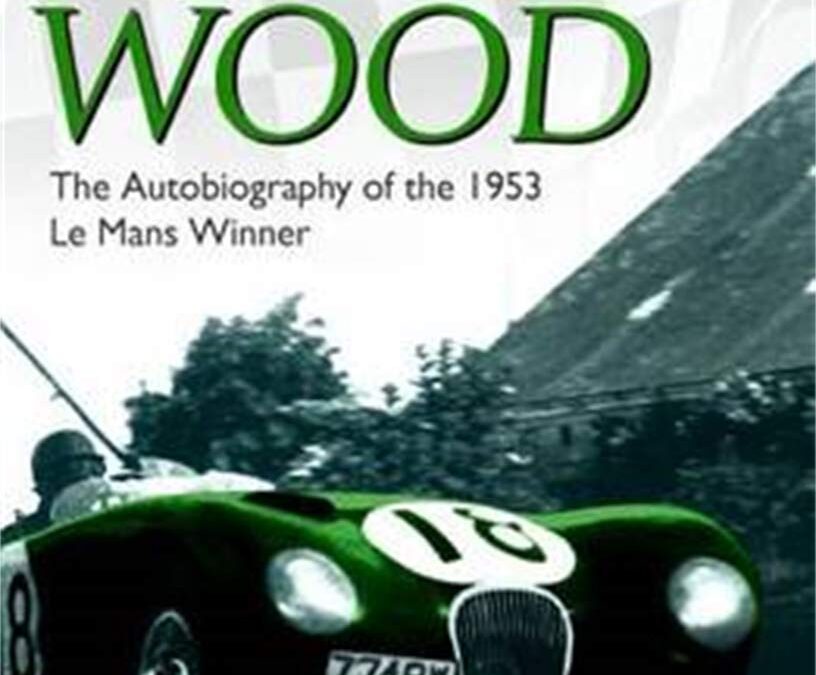
Duncan Hamilton won the classic Le Mans 24-Hours race in 1953, co-driving his workcentered C-Type Jaguar with Tony Rolt. In 1954 the same pair finished second, losing to a much larger-engined V12 Ferrari and by the narrowest margin in years. In all, Duncan Hamilton competed in nine of those great Le Mans endurance classics. Having cut his racing teeth in such pre-war cars as the R-Type M.G and the Bugatti Type 35B, Duncan graduated to one of the immortal Lago- Talbot Grand Prix cars—which he subsequently mislaid in a French coal-hole. After a hugely eventful racing career—only Duncan could get himself fired by Jaguar for winning the Rheims 12-Hours race in 1956—he eventually hung up his racing helmet in 1958. As Earl Howe wrote in the original 1960 foreword to this book, though the drivers of this age were fiercely competitive, there were also “friends to meet, stories to tell and almost certainly a party to be enjoyed…” Duncan Hamilton was certainly a little larger than life, and this book tells the story of a man who wasn’t just one of the most successful drivers of the 1950s, but also the man who trespassed at Brooklands, who spent the war in the Fleet Air Arm accidentally trying to drown American Admirals, and who was once stopped for speeding on the Cromwell Road, rushing to take part in a TV program on road safety. It is a must for any classic car enthusiast’s bookshelf.
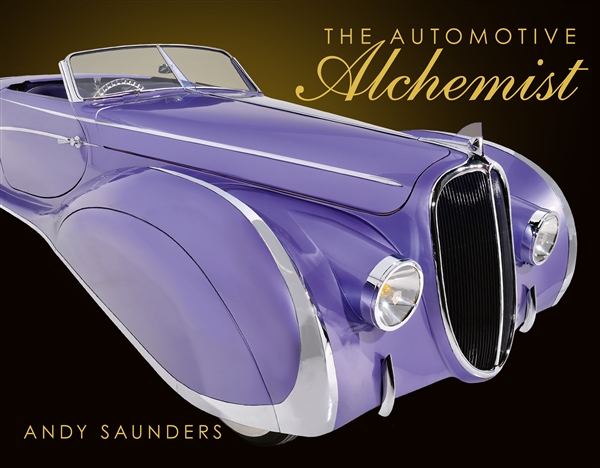
Andy Saunders’ ‘Automotive Alchemist ’ is a roller-coaster ride through the highs and lows of this charismatic man’s life. From the early years of learning the basic skills of cutting and shaping metal then painting and airbrushing, to his mature creations, restorations and the inherent genius of his designs. Andy welcomes us into his workshop and his head: not afraid to express his emotions, as he deconstructs and then rebuilds each vehicle, he lays bare his motivations, inspirations, influences, and passions. Intertwined in the narrative is the work involved in the creation of 60 cars, described here with many detailed photographs.
Forty-two of Andy’s creations now reside in museums and private collections across the globe but the most unusual fate is that of Flat Out, the Guinness Book of Records acclaimed Lowest Car in the World, which is now a coffee table in the foyer of a huge Californian corporation.
The book is not a technical ‘how to create wild custom cars’ manual. Rather it is a celebration of Andy’s joy of creation and his design genius, though tempered by personal traumas and losses. He has, on many occasions, been referred to as the British George Barris, the American “King of Kustomizers.” Unlike many biographies, this book engages the reader with its honesty and humour.
Andy Saunders grew up in Poole on the south coast of England and developed an early relationship with the building and customising of cars. His first project was finished before he was old enough to hold a British driving license.
Since that first project, his journey to become Britain’s leading and most recognisable ‘Car Artist’ has evolved. With his painstaking attention to detail and his knowledge of the styling masters from bygone eras, his creations have always been unique and, occasionally, controversial.
Never shy of turning his ideas into reality or taking unexpected opportunities to fruition, Andy has, on occasions, thrown away the accepted rule book and created some truly amazing vehicles: making a Citroën CX into a road-legal alien craft; turning Ford’s 1958 X-2000 ‘car of the future’ model into a full-sized reality and creating a Cord coupe that the factory would have been proud to call their own.
Andy has three Guinness Book of Records certifications: twice for the ‘lowest car in the world’ and once for the ‘lowest van in the world’ which remains unbeaten and has been approached by film companies and undertaken commissions for major car manufacturers. But mostly he builds whatever has inspired his creative juices from lowriders, Incantation, to shortened Minis, Mini Ha Ha; from restyling a Bentley Mulsanne, which was acclaimed by the Rolls-Royce and Bentley Owners Club as “the most beautiful coachbuilt Bentley to have been built since WWII”, to a 2CV inspired by Picasso – Picasso’s Citroën; and from his drivable version of Bertone’s Lancia Stratos Zero to his Art Deco creation of a rare 1939 Peugeot, Metropolis, inspired by Fritz Lang’s 1927 masterpiece of the same name.
During the past four decades Andy has restored Cord, Pontiac and Rolls Royce vehicles. Rescued and restored the unique and much-maligned 1957 Aurora Safety Sedan and realised an affinity with the great designer Alex Tremulis. Andy’s creations have appeared in exhibitions, on television and in magazines as far afield as Australia, Korea, America, the UK and Europe and many of his vehicles nowadays reside in museums and collections from California to Japan and from Europe to the Middle East.
And so to his latest masterpiece, Déjà: inspired by a 1930’s popular French girls name, some body panels he didn’t want or need and the pinnacle of French coachbuilding, Andy has created this Delahaye, a hand-built steel roadster. This beautiful cross between Joseph Figoni’s 165s and Jacques Saoutchik’s 175 somehow appears to be some eighty-five years late for her debut at the Paris Salon de l’Automobile.
- 464 pages
- Hard cover with dust jacket
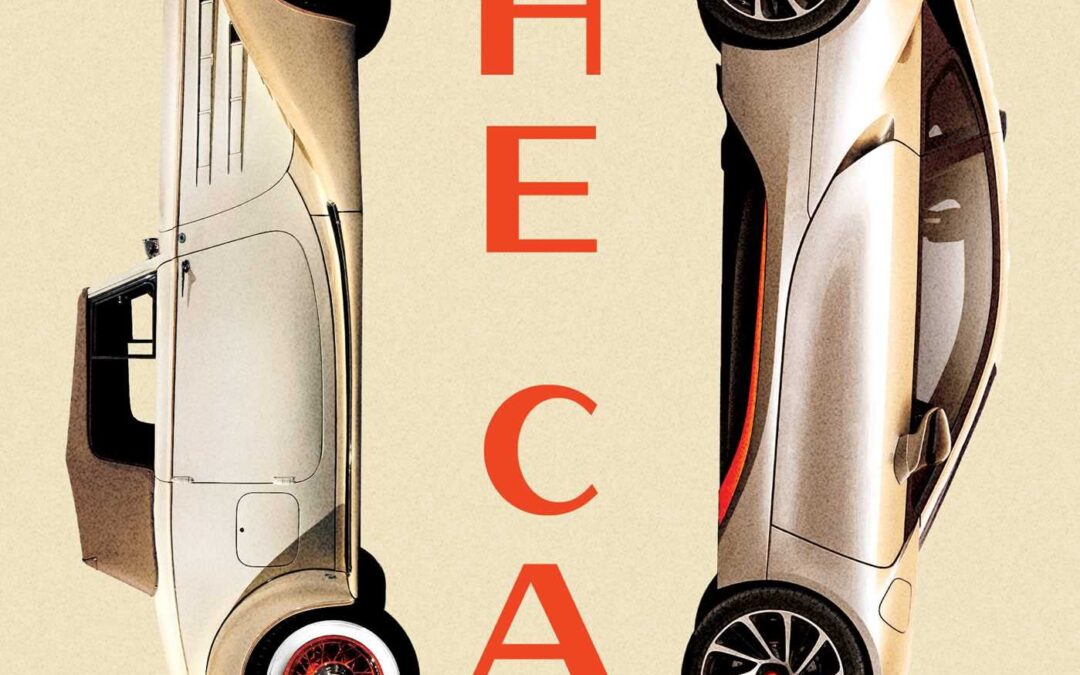
A spirited, insightful exploration of our favorite machine and it’s cultural impact on society over the past one hundred and fifty years.
More than any other technology, cars have transformed American popular culture. Cars have created vast wealth as well as novel dreams of freedom and mobility. They have transformed our sense of distance and made the world infinitely more available to our eyes and our imaginations. They have inspired cinema, music and literature; they have, by their need for roads, bridges, filling stations, huge factories and global supply chains, re-engineered the world. Almost everything we now need, want, imagine or aspire to assumes the existence of cars in all their limitless power and their complex systems of meanings.
This book celebrates the immense drama and beauty of the car, of the genius embodied in the Ford Model T, of the glory of the brilliant-red Mercedes Benz S-Class made by workers for Nelson Mandela on his release from prison, of Kanye West’s ‘chopped’ Maybach, of the salvation of the Volkswagen Beetle by Major Ivan Hirst, of Elvis Presley’s 100 Cadillacs, of the Rolls-Royce Silver Ghost and the BMC Mini and even of that harbinger of the end—the Tesla Model S and its creator Elon Musk.
As the age of the car as we know it comes to an end, Bryan Appleyard’s brilliantly insightful book tells the story of the rise and fall of the incredible machine that made the modern world what it is today.
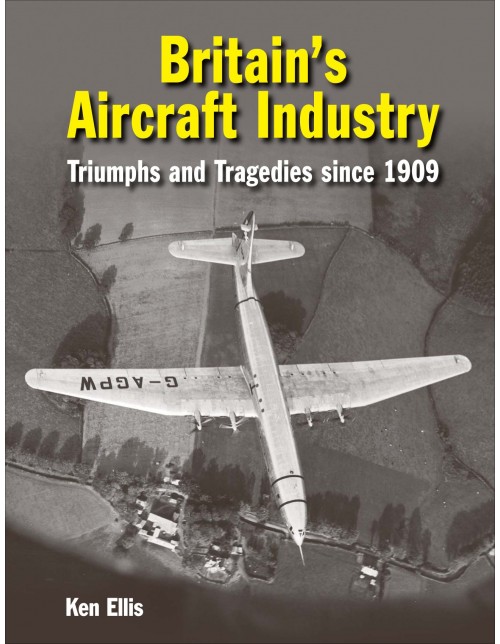
Britain established the world’s first aircraft factory in 1909 after the Short brothers met up with the American Wright brothers and struck a deal. The industry expanded rapidly to rise to the challenge of World War One with such thoroughbreds as the Camel and the SE.5. The post-conflict slump proved to be difficult but classics such as the Moths, the Hart family and the Gladiator maintained Britain’s leadership. Another war loomed and iconic types such as the Hurricane, Lancaster, Mosquito, Spitfire and the Meteor jet appeared.
With the return of peace over 20 major manufacturers faced inevitable contraction. The misguided Bristol Brabazon airliner was a dead end but the superb de Havilland Comet and Vickers Viscount led the field. Canberras, Hunters, Lightnings and the V-bombers met the Cold War confrontation.
For the first time here is a readable, highly-illustrated, examination of the entire industry; its heritage and the changes it faces in the 21st century, both technical and political. The life and times of the 40 ‘big names’ from Airbus to Westland: aircraft, designers, factories, failures and successes, mergers and closures are all explained, supported by statistical tables and copious illustrations. Here is a celebration of a world class industry that remains at the cutting edge of excellence.
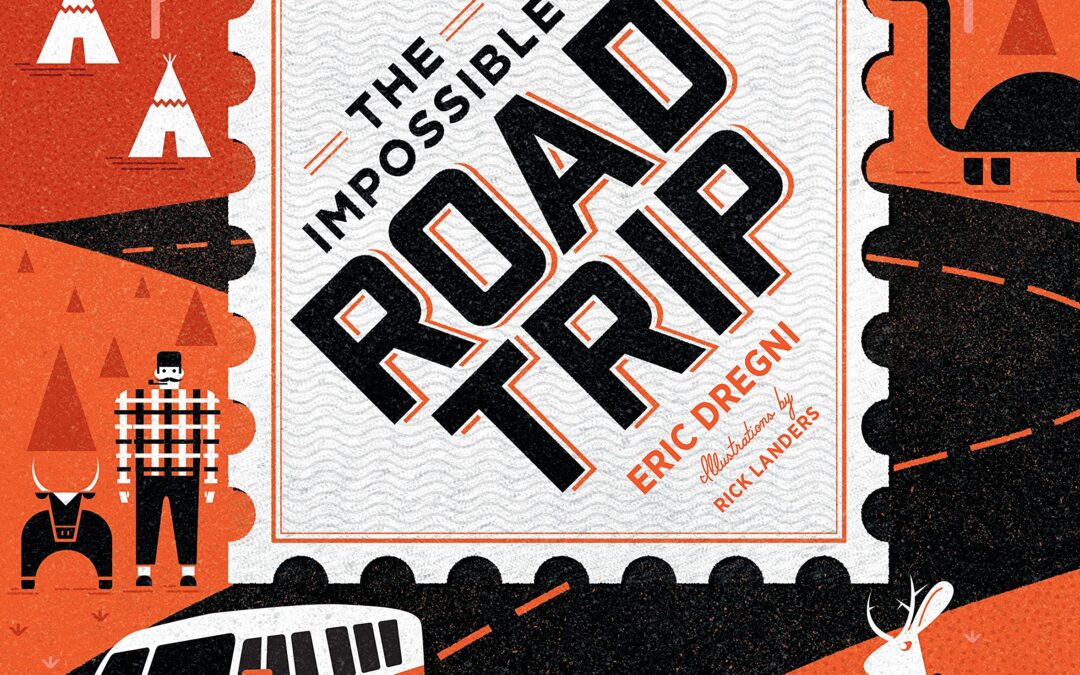
Filled with color photography, entertaining site descriptions and histories, and five unique infographic map illustrations, The Impossible Road Trip is your ultimate look back at America’s most famous—and quirkiest—roadside attractions, past and present.
The great American road trip is back. With its advantages for your health, budget, and the environment, now is the time to plan the road trip you have always dreamed of taking.
Following in the great tradition of the mid-century golden age of car travel, join the new wave of road warriors with a targeted itinerary chosen from the 150 roadside attractions explored in this colorful guide. From famous to quirky and covering all 50 states, author Eric Dregni gives you an unprecedented look at the breadth of roadside attractions in the US, illustrated in part by the photography of architectural critic and photographer John Margolies (1940–2016). Specially commissioned infographic map illustrations capture the spirit of mid-century automobile travel.
Each site depicted is accompanied by a lively and insightful history and color imagery. From autumnal New England to the gothic South, from the homey Midwest to the great expanses of the Desert Southwest, the dizzying heights of the Rocky Mountains, and the breathtaking Pacific Coast, The Impossible Road Trip encompasses it all:
- Neon-shrouded motels
- Mimetic architecture
- Tourist traps
- Roadside sculpture
- And much more
You’ll see sites both famous and esoteric, including the Cardiff Giant in Cooperstown, New York; the five-story Haines Shoe House in York, Pennsylvania; Solomon’s Castle in Florida; the world’s largest fish in Hayward, Wisconsin; one of several Paul Bunyan statues; Bob’s Big Boy in Burbank, California; and so many more.
With The Impossible Road Trip in hand, set out to discover the nation’s oft-overlooked nooks and crannies.

Immortalizing Americana one story at a time!
100 full color glossy pages of Americana.
Inside Issue #2 – Spring 2020:
A side:
Fran Bannister’s Roadster
Cedric and Kim Meek’s Roadster
Rick Steele’s 1952 Bel Air
Porterville Roadster Races
Veteran’s Rides
Mark Greenmantle Photography
Service Salute
Cool Products
Pinups:
Antonina Shevchenko
Pin up from the Past: Sharleen Jackson
Side B:
Mike Thompson’s 1932 Coupe
Matt Ivancic’s 1966 Mustang
Mike Brown’s Drag Beetle
Faultline Kustom’s 1970 Triumph
Travis Thornburg’s 1967 Camaro
Lion Drag Museum
70’s Archive
Concept and Style
Artist Feature: Derek West
Pinups:
Ariel Abshire
Molly Graphite






















